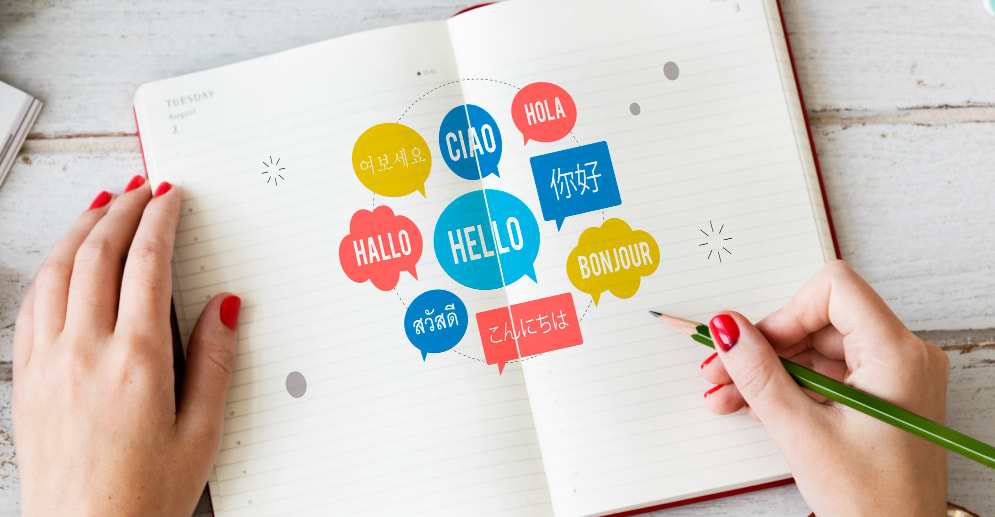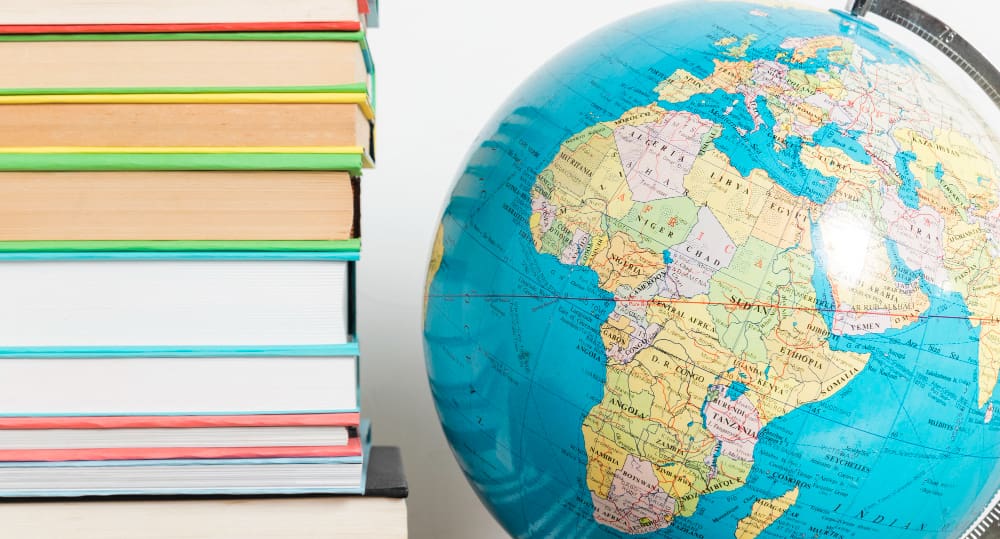Book Translation Tips Every Author Should Know
Writing a book is one thing, but translating your literary work into different languages and preserving its beauty and integrity is a completely different task. This task requires a different set of skills than that of writing. No wonder many authors are eager to master the art of book translation!
Consider this: the sales of translated books have soared during the past years. For example, more than 1.9 million translated fiction books were sold in the United Kingdom only in 2022. This was a 22% increase compared to translated book sales in 2021.
Whether you’d like to get your book translated by a professional or try out your own skills in translating your book, we’ve prepared the most effective strategies for you to check out in this article.

Why Translate Your Book
In the increasingly vast literature landscape, book translations have gained much popularity among writers. Here’s why you might also want to translate your literary works:
- Expand your readership: When you translate your books, you have an incredible opportunity to tiptoe into foreign waters. Once you do that, you can beckon new readers to your shore and share your narratives with a broader audience.
- Grow your author’s brand awareness: By overcoming linguistic barriers, you gain more visibility and a significantly higher following as more readers become aware of your author’s brand.
- Boost revenue from your book: With an accurate translation, you can substantially increase your book sales; some books sell even better when translated. For example, translated fiction books sell better than English fiction in the UK. Moreover, certain books became international bestsellers only after being translated, such as The Girl With The Dragon Tattoo by Stieg Larsson or The Alchemist by Paolo Coelho.
- Participate in cultural exchange: Reading translated books can help readers learn about different cultures and traditions, break down cultural barriers, and promote understanding.
How to Translate a Book
There are two ways to translate books into different languages. The first one is hiring an expert to do the job for you, and the second is to translate it yourself. Let’s see how to approach each of these methods.
Method One: Hire Professional Translators
If you decide to hire a professional translator, then you might want to keep the following strategies in mind, as they will make the process so much easier.
- Set a Budget
The cost of book translation can vary dramatically from $0.08 to $0.40 per word. Based on these numbers, the cost for an average 50,000-word text would be:
- The lowest: 50,000 x $0.08 = $4,000
- The highest: 50,000 x $0.40 = $20,000
However, don’t be alarmed just yet. The prices differ greatly based on the following factors:
- Turnaround time
- Volume
- Complexity level
- Language pair
- Genre
For example, the rate for translating a children’s story may be only $0.10/word because it’s usually a tiny text with simple language. Or if you plan to translate your book from English to Arabic, you may have to pay as much as $0.20/word or $0.45/word because of the complexity of the language.
It is important, however, to get quotes from multiple translation sources before making a decision. This will help you get the best possible price for your book translation.
- Decide between a Freelance Translator or a Translation Service
Based on your specific needs and budgets, you should start evaluating whether you’re going to hire a freelancer or a professional translation service to translate your book. Before you make your final choice, make sure that you evaluate the following factors:
- Cost: Freelancers are typically less expensive than translation services, but they may not have the same level of experience or expertise.
- Quality: Translation services typically have a team of literary translators who work on each project, which can help ensure good quality. However, freelancers may be able to provide a more personal touch.
- Timeline: Freelancers may be able to complete a project more quickly than a translation service, but they may also be more likely to make mistakes.
- Communication: It is important to be able to communicate effectively with your translator. Freelancers may be more responsive than translation services, but they may also be less organized.
Where to find freelance translators:
Where to get translation services:
- Ask For a Sample and a Short Test Copy
When choosing a reliable translator, it may not be enough to scroll through profiles and read testimonials and reviews about their work. You may also need to take a look at some of their translation samples. In addition to these samples, it is a good idea to test the translator’s skills, just to make sure they don’t use an online tool, such as Google Translate, to translate your text. Note that you should pay an additional payment for the test sample.
- Sign a Contract
It is time to prepare a legal document. Why do you need one? Because signing a contract with a translation agency or a freelance translator protects you from possible legal issues in the future. It allows you to confirm that you, the writer, will have copyright ownership of your work. In addition to that, you can specify compensation in case of an unsatisfactory result.
Generally, a translator book contract helps you outline all the terms of the translation project and adjust the deadline to make sure your translated copy is submitted before the agreed-upon date.

Examples of Authors Who Outsourced Their Book Translation
Hiring a freelance translator or a translation agency can take the weight off your shoulders as you entrust professionals with your work. And you won’t be the only one doing this; many famous authors have chosen to go this route over the years, including:
- Stephen Lawrence (Moondance, English-to-Greek by Konstantina Deletari)
- Piero San Giorgio (Survive The Economic Collapse, English-to-Italian and French-to-Italian by Francesca Soldani)
- Ruth Eshel (Dance Spreads Its Wings, Hebrew-to-English by Helen Kaye-Eleazari)
- Isabella Pallavicini (The Interpreter, German-to-English by Rachel Farmer)
- Dan Brown (Inferno – from English to German, French, Italian, Spanish, Portuguese, and Catalan)
An interesting fact: Dan Brown hired 11 people to simultaneously translate his novel into several languages. He quarantined them in an underground bunker for two months to complete the work. Dan Brown had some other strange writer’s habits, too.

Method Two: Self-Translating Your Book
If you are fluent in a foreign language, why not use it to your advantage? In fact, many authors have used their knowledge of a second language to translate their own work, including:
- Jorge Luis Borges: Spanish-to-English
- Haruki Murakami: English-to-Japanese
- Vassilis Alexakis: Greek-to-French
- André Brink: Afrikaans-to-English
- Assia Djebar: Arabic-to-French
- Karen Blixen: Danish-to-English
- Milan Kundera: Czech-to-French
Let’s look at Kundera, for example. After releasing his debut novel, Žert (The Joke), he hired professionals at least three times to translate it into French. He was so disappointed with the result that he eventually translated the book himself.
What about you? Would you give it a try? If you’re thinking about it seriously, there are certain things to keep in mind when translating a book yourself. Follow these tactics for effective self-translation:
- Create a Translation Plan
Planning always comes first. For this plan to be effective, you can use one of the best strategies to achieve your goals: the SMART criteria: Specific, Measurable, Achievable, Relevant, and Timely.
Here is how it can go for a 50,000-word book:
- S – Specific: I plan to start translating my book of 50,000 words on December 1, 2025, and finish it on December 29, 2025.
- M – Measurable: I will set a 2,000-word milestone per day.
- A – Achievable: At the average translation speed (250 words/hour), I’ll cope with 2,000 words daily, dedicating eight hours to it.
- R – Relevant: I want to become one of the self-published authors in international markets, so this translation is essential to me.
- T – Timely: December 29, 2025, is my deadline. I’ll work on it from 09:00 am till 01:00 pm (1,000 words) and from 6:00 pm till 10:00 pm (another 1,000 words). Covering 2,000 words/day will take 25 days to finish 50,000 words. I also have four days to edit and proofread it thoroughly.
With this plan in your hands, you will definitely finish your work in time for publication.
- Use the Right Tools
Before you rush into translating your book, make sure you have the right tools to help you along the way. These could be web-based dictionaries, glossaries, or translation memory and management tools, such as:
- Online dictionaries: The Free Dictionary, Lexicool, WordReference, and Snappywords.
- Glossaries: Transifex Glossary or the KudoZ open glossary
- Proofreading & editing software: Grammarly, Ludwig, LanguageTool
- Translation memory tools: Bureau Works, MyMemory Translation, or OmegaT
- Generative AI-based tools: BookTranslator (powered by ChatGPT), Smartcat, Deepl
Some of these tools have been used by published authors and proved to be successful. Estelle Van de Velde, for example, is a Belgian indie writer who turned to Deepl.com to translate her novel The Londoners into French. She explains the whole process in detail in her YouTube guide on translating and self-publishing a book.
- Minimize Usage of Google Translate
Who said Google Translate? Forget it! Minimize its usage as much as you can. Why? Because Google Translate can make errors (like the one below) that will leave you unable to trust online translation tools in general.

We want to note that it’s not always bad and faulty. It’s possible to use it if only you do it wisely. For example, L. R. Bakker, a self-published author from the Netherlands, decided to convert his book As Far As Soles Go from English into Dutch on his own. He first used machine translation and edited it himself to add a human touch, and then he asked his girlfriend to proofread it. Finally, he hired a proofreader to get one more objective opinion.
- Revise, Revise, and Revise Once Again
“Editing and proofreading is like a bag of sugar. You empty it all out, but when you turn it over, there is still sugar left in it. […] No matter how many times you repeat the process, you still find more sugar crystals in your bag.”
These words belong to Charles O’Donnell, an author of high-tech science-fiction thrillers, which he once told to his writer-friend Eva Melusine Thieme.
Your translated copy is just like that bag of sugar, Thieme claims. You should try to get rid of all the “crystals” (errors) in your translation and brush it up several times using all the powers of editing and proofreading you have.
Read more: How to Become an Amazing Self-Editor
- Hire an Editor, If Necessary
When your translation journey is over, you might want to hire an expert for different types of editing, including:
- General editorial feedback
- Structural editing
- Stylistic editing
- Copyediting
- Proofreading
Conclusion
As you can see, translating a book is a complex but rewarding process. It can help you open new literary markets, forge new connections, and broaden the reach of your work, making it a success among a global audience.
So, take the leap, translate your book, and watch it resonate with readers from diverse backgrounds and cultures.
.
Read More
Top 10 AI Content Creation Tools in 2025
How to Set Realistic Writing Goals and Stay on Track
9 Hacks for Perfecting Your Book Research
















